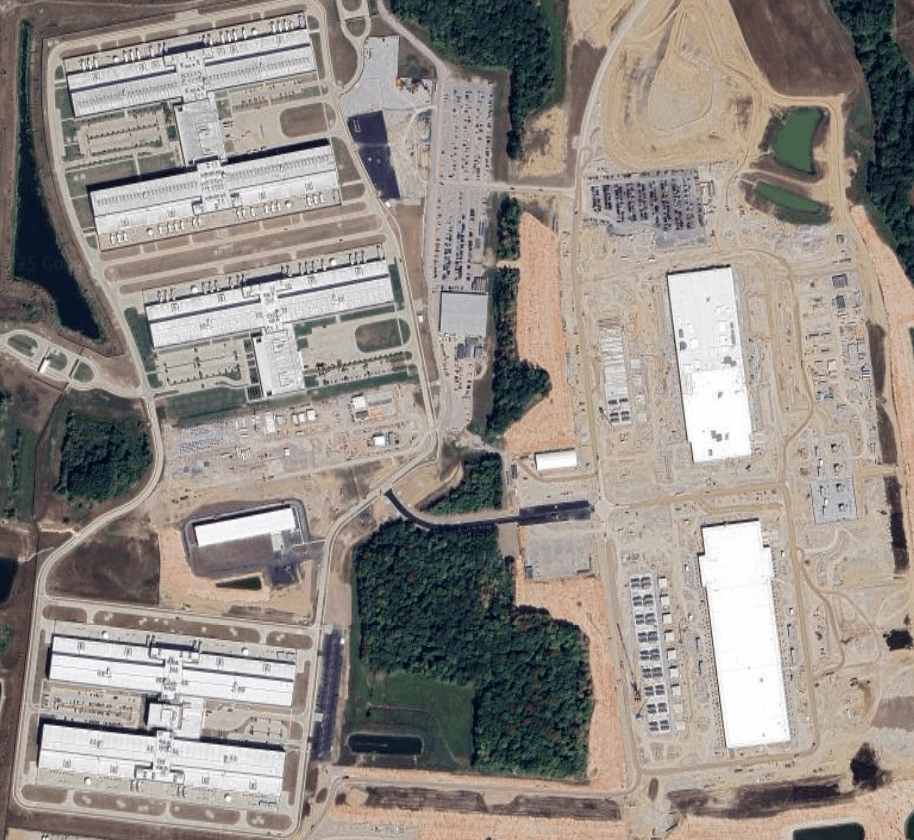Inside Meta’s Prometheus Campus Shift

Aterio Research Team

Deep in Central Ohio, in the tech-forward suburb of New Albany, Meta’s Prometheus Campus is becoming ground zero for the future of AI infrastructure deployment.
What started as a traditional hyperscale complex of five H-shaped data centers is now evolving into a radically different buildout—with tent-like structures replacing concrete shells, and timelines measured in months, not years.
In Q1 2024, Meta broke from its previous design by beginning construction on two new AI-optimized buildings, tailored to support high-density compute for training large models. But in mid-2025, satellite imagery and executive comments confirmed something even more ambitious: a completely reimagined build strategy that reduces both structural complexity and time-to-activation.
“We pioneered this new method where we’re basically building up these weatherproof tents and building out the networks and the GPU clusters inside them in order to build them faster. They are hurricane-proof tents.”
— Mark Zuckerberg, July 2025, The Information
What We’re Seeing from the Ground (and Above)
Aterio’s satellite tracking has confirmed four new tent-style structures emerging across the Prometheus Campus. Unlike the H-style buildings, these modular, rapid-deploy facilities signal a fundamental shift—not just in architecture, but in Meta’s infrastructure speed, risk tolerance, and AI scale ambitions.

Figure: Meta’s Prometheus Campus construction progress as of July 3, 2025. Captured via Pléiades Neo satellite, © 2025 Airbus DS, sourced through SkyWatch. Image analysis by Aterio.
Key Data Points & Observations
- Activation Timeline: Based on our construction monitoring across Meta sites, these tents could be operational in just 4–7 months, compared to traditional 14–20 month timelines. That means power draw, cooling demand, and compute activation could happen twice as fast.
- AI-Specific Design: These builds are purpose-built for GPU clusters and liquid cooling systems. With Meta aggressively recruiting AI talent and focusing on compute per researcher, the physical footprint is being optimized for high-throughput model training—not generic workloads.
- Utility Coordination via Williams (NYSE: WMB): To power this scale, Meta is working with Williams to expand natural gas infrastructure, ensuring reliable delivery to Prometheus via compression station upgrades and new pipeline links. This aligns with a broader trend of hyperscalers collaborating directly with midstream operators to secure low-latency, high-capacity energy inputs.
Why Global Infrastructure Investors Should Pay Attention
- Grid Pressure in Central Ohio: Meta’s accelerated builds add major load to Ohio’s grid—impacting AEP Ohio and PJM planning cycles. Expect increased transmission investments in ZIPs like 43054 and 43031.
- Energy Infrastructure Partnerships: Meta’s collaboration with Williams (NYSE: WMB) on natural gas delivery reflects a new era of midstream + hyperscale integration—a trend global energy investors should watch closely.
- CapEx and Supply Chain Compression: Tent builds shrink project timelines, forcing faster procurement and deployment across electrical, cooling, and structural suppliers.
At Aterio, we track Data Center buildouts in real time—across satellite imagery, construction filings, and energy agreements. Our Prometheus data covers:
- Historical build timelines and patterns across Meta campuses
- Forecasted power activation windows by building
- Utility partnerships and regional energy trends
Download our July Data Center Report or schedule a call.